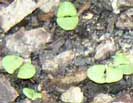 |
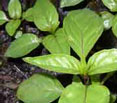 |
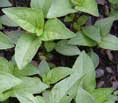 |
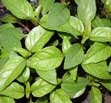 |
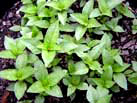 |
Japanese Perilla
Fresh leaves; there are cultivars with either green or red foliage. Occasionally, the seeds find use as a spice. Aromatic but difficult to describe. As with many other plant of the same family, olfactory characteristics are quite variable and depend, besides genetic factors, also on soil and climate.
Perilla seeds contain a drying oil (40%) with high content of multiply unsaturated fatty acids (60% linolenic acid, 15% both linolenic and oleic acid); their medicinal value is sometimes matter of great exaggeration.
Perilla is one of the few aromatic plants that have established themselves in Japanese cookery. Other examples, besides those named below, include sichuan pepper, poppy and water pepper.
In Japan, perilla leaves are used to garnish sashimi, the famous raw fish (see wasabi) and tempura, a Portuguese-influenced Japanese recipe. Basically, tempura is battered vegetables (potatoes, carrots) or sea food deep-fried in diluted sesame oil. The secret lies in the very special batter, which is prepared with ice water and consumed immediately, resulting in a unique, light, almost transparent coating. Perilla leaves can either be used as a garnish, or be battered and deep-fried for themselves.
In Japan, perilla cultivars with red or purple leaves are preferred to add both flavour and colour to pickles; they appear in beni shoga (pickled ginger eaten with sushi, see wasabi) and umeboshi, a special kind of salty pickle prepared from unripe plum-like fruits. See also annatto on the topic of food colorants.